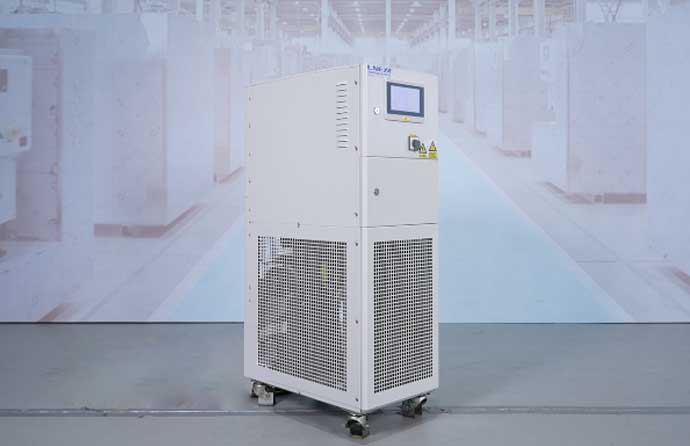How Do Energy-Saving Chillers Cut Your Power Bills
The energy cost of industrial refrigeration accounts for at least 20% of the total energy consumption of an enterprise. Using energy-saving chillers is not only a requirement to reduce electricity bills, but also a need to reduce carbon emissions. Regulations in various countries have gradually strengthened restrictions on high-energy chillers.
A chiller with lower energy consumption may help you avoid penalties from environmental inspections. So what core technologies do energy-saving chillers use to help you save money? This article explains it in detail!
Variable frequency drive technology
The speed of components such as compressors, fans and water pumps in traditional chillers is fixed. This means the components run at full speed whenever the system is on, regardless of the actual cooling demand. This often leads to energy waste and accelerates equipment wear. In order to avoid this trouble, chiller manufacturers use variable frequency drive technology in the above components.
The variable frequency compressor can adjust the speed according to the refrigerant flow, the variable frequency water pump can automatically adjust the flow according to the chilled water outlet temperature or pressure, and the variable frequency fan can also automatically adjust the speed. The cooling system using variable frequency technology is called a VFD chiller. Its energy-saving effect is very obvious during low-load conditions such as nighttime or spring and autumn.
Heat recovery systems
In the condenser, the refrigerant transfers heat to the air or cooling water. However, in fact, this seemingly waste heat can be recycled. Many energy-saving chillers have heat recovery systems, which can use this part of the heat for heating water or process heating, such as washing water, preheating and other processes.
The specific method is to connect a heat exchanger to the front end of the condenser, first transfer part of the heat of the high-temperature refrigerant gas to the water circuit on the other side, and then let the refrigerant enter the main condenser to complete condensation. This method can not only reduce the energy consumption of the heating equipment, but also improve the energy utilization rate of the chiller.
High-efficiency heat exchanger
The evaporator and condenser of the chiller are both served by the heat exchanger, which is the key to affecting the heat transfer efficiency and energy consumption. The efficient heat exchanger has a larger heat exchange area per unit volume, a smaller thermal resistance, and a more uniform distribution of the fluid in it. In this way, the refrigerant can evaporate more fully in the evaporator and quickly release heat in the condenser. This reduces the compressor’s heat load. Consequently, the fan and water pump don’t have to run at full speed constantly, so the energy consumption of the equipment is naturally reduced.

EEV(Electronic Expansion Valve)
Compared with TXV (Thermal Expansion Valve), electronic expansion valve has a fast response speed. It can accurately adjust the valve opening and control the refrigerant flow according to the real-time temperature, pressure, superheat and other data fed back by the sensor, thereby avoiding energy waste. You can think of it as a faucet, open it smaller when the load is small to reduce the refrigerant flow, and open it larger when the load is large to ensure the normal operation of the system. It’s just that this adjustment process is completely automated.
Environmentally friendly refrigerant
The choice of refrigerant is very important for the energy efficiency of the chiller. Traditional refrigerants such as R22 and R134a are not friendly to the link, and the cooling effect is not ideal. Now, many chiller manufacturers choose to use eco-friendly refrigerants such as R290 and R32 with low GWP (global warming potential) and ODP (ozone depletion potential) of 0. They have little impact on global warming and higher cooling efficiency. When used with high-performance compressors and heat exchangers, they can achieve good energy-saving effects.
Efficient insulation
If the insulation is too poor, the cold in the cooling system will be lost in large quantities during the heat exchange process, so that the system cannot reach the set temperature even after working for a long time, resulting in increased energy consumption of the equipment. You can think of a chiller without insulation as an air conditioner without closing the doors and windows.
No matter how hard the air conditioner tries to cool, the cold will be dissipated outside the house, and the temperature inside the house is difficult to drop. The evaporator shell, chilled water pipes, compressor and other parts of the energy-saving chiller are insulated to reduce the loss of cold.
Use energy-saving chillers to reduce your electricity bills
If you are worried about high electricity bills or environmental protection policies, you may need an energy-saving chiller. LNEYA takes it as its mission to create greater value for customers, constantly explores more advanced energy-saving technologies, and launches a series of energy-saving chillers. From selection to delivery, we provide one-stop service to help you easily save huge electricity bills.
Contact us to start a new experience of green cooling!
Verwandte Kühlgeräte
KONTAKT US
TEL:
EMAIL:
WeChat & WhatsApp:

Wechat QR

Haben Sie eine Frage oder benötigen Sie ein Angebot? Füllen Sie das untenstehende Formular aus, und unser Team wird sich innerhalb von 24 Stunden bei Ihnen melden.
 LNEYA Industriekühler Hersteller Lieferant
LNEYA Industriekühler Hersteller Lieferant
















